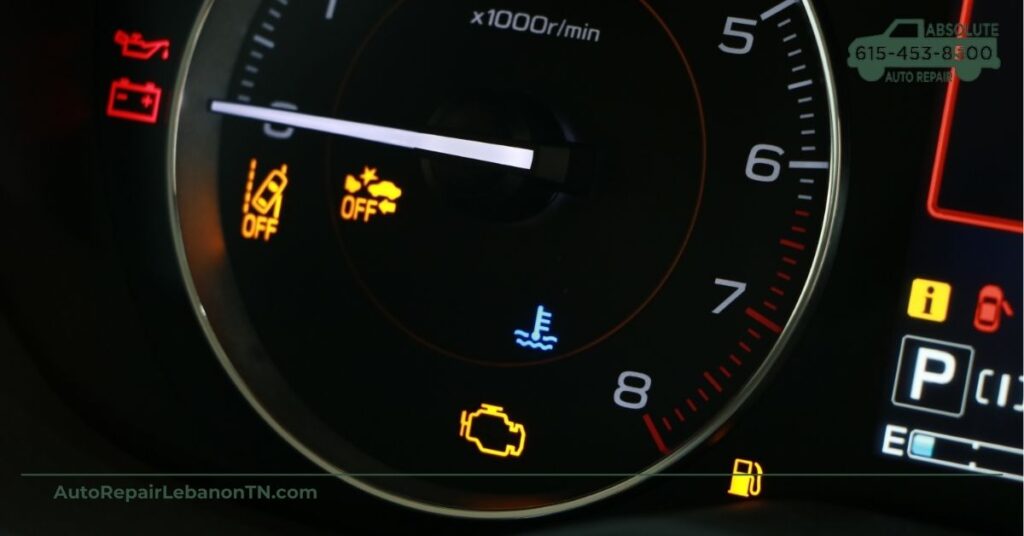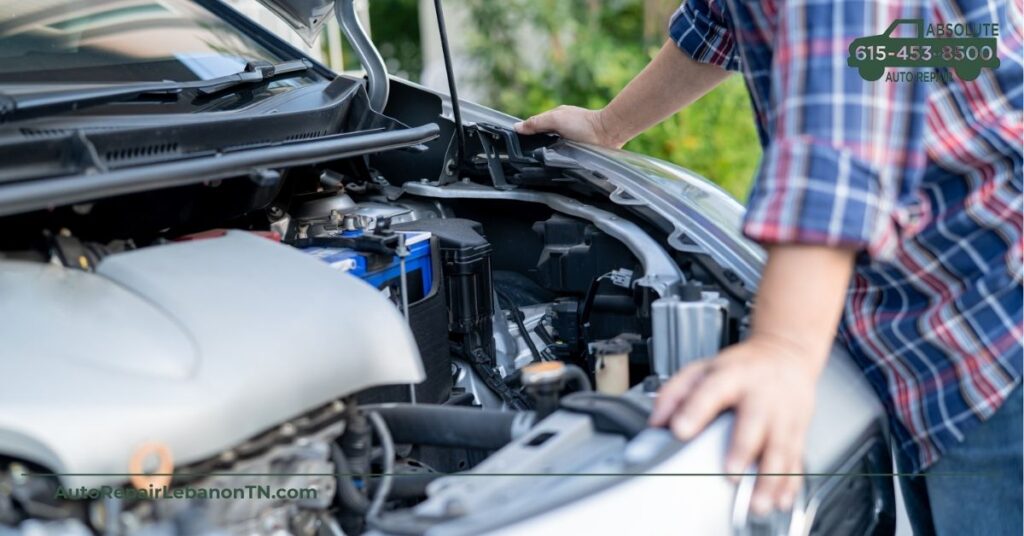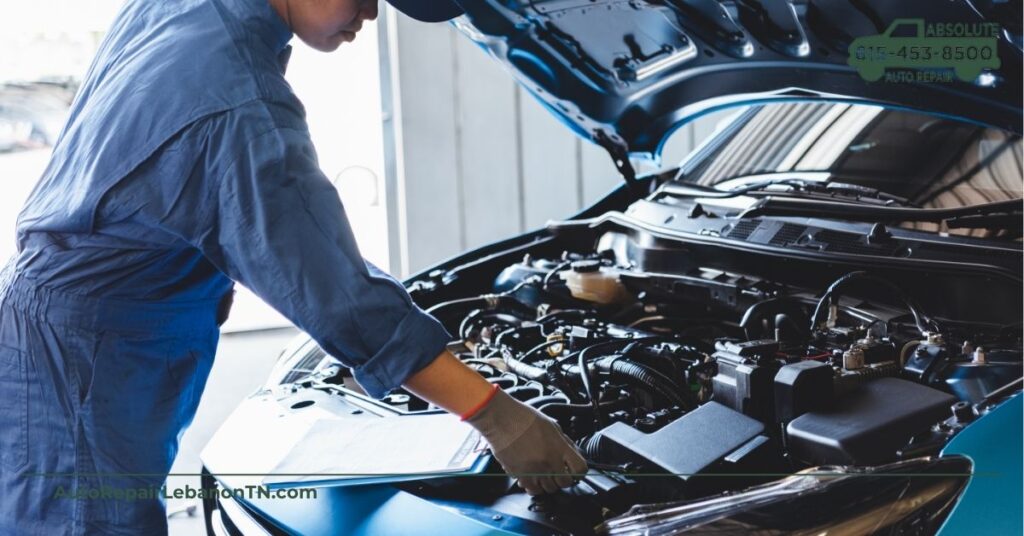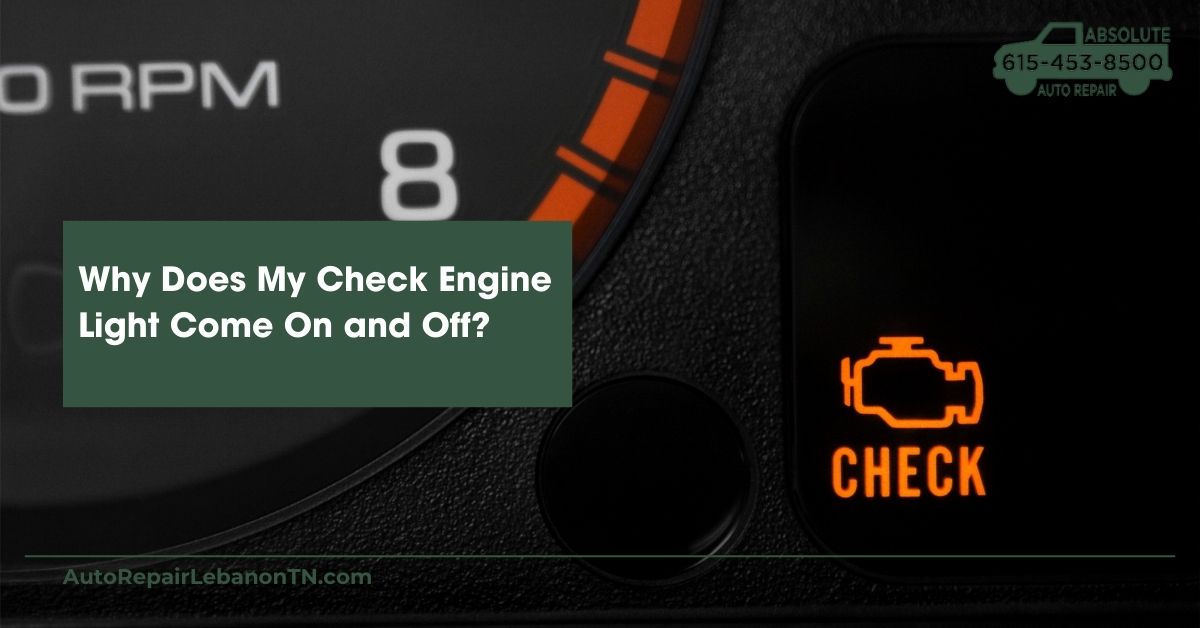If you’ve ever noticed your check engine light flickering on and off, you know it can be both puzzling and frustrating. This little warning light is your car’s way of communicating potential issues, but intermittent signals can leave you scratching your head. Understanding why it behaves this way is crucial for maintaining your vehicle’s health and your peace of mind.
You might be tempted to ignore it when the light turns off, but that could be a risky move. From minor issues to more serious problems, knowing the reasons behind this erratic behavior can save you time and money in the long run. Let’s jump into the common causes of that pesky check engine light and what you can do about it. Your car deserves the best care, and so do you.
Understanding the Check Engine Light

The check engine light serves as a crucial alert system for your vehicle. This light can illuminate for various reasons, indicating that something requires attention. It’s essential to recognize that a flickering light often points to more urgent issues. Sometimes, the light may turn on and off intermittently, which can be perplexing.
Common causes include loose gas caps, faulty oxygen sensors, or damaged spark plugs. Each of these factors can trigger the light without presenting immediate symptoms. You might find that the light switches off after a short drive, but this does not indicate the problem has resolved. Ignoring the light can result in worsening issues, leading to more costly repairs down the road.
Regular vehicle maintenance plays a vital role in preventing these alerts. Keeping an eye on your car’s performance helps identify potential problems early. If the check engine light activates, taking your vehicle to a qualified mechanic promptly allows for timely diagnostics and repairs. By understanding the implications of the check engine light, you can maintain your vehicle’s health and performance effectively.
Common Reasons for a Fluctuating Check Engine Light

Understanding the reasons behind a fluctuating check engine light can help you address potential issues early. Several factors contribute to this erratic behavior.
Faulty Sensors
Oxygen sensors measure unburnt oxygen levels in your exhaust. A dirty or malfunctioning sensor may trigger the check engine light intermittently. If your oxygen sensor starts failing, you might notice the light coming on and off unexpectedly. The mass airflow (MAF) sensor also plays a crucial role. It measures air entering the engine, maintaining the correct air-fuel ratio. When this sensor malfunctions, fluctuations in engine performance can cause the check engine light to appear intermittently. Other sensors, including those for temperature and pressure, can experience similar issues. These inconsistencies can lead to an on-and-off check engine light.
Loose or Damaged Gas Cap
A loose gas cap often triggers a check engine light. Tightening the cap usually resolves this issue. If the cap remains damaged or worn out, consider replacing it to avoid continuous light activation. The gas cap plays a vital role in maintaining your vehicle’s vapor pressure and emissions control system. Ignoring this seemingly minor issue could lead to larger problems and repairs. Regularly inspecting your gas cap can help you avoid that hassle.
Diagnosing the Issue

Diagnosing the cause of a flickering check engine light involves a systematic approach. You can often pinpoint the issue with the right tools and techniques.
Using an OBD-II Scanner
An OBD-II scanner is essential for diagnosing check engine light problems. This device links to your vehicle’s onboard computer and retrieves diagnostic trouble codes. You’ll see codes that provide insights into potential malfunctions, such as failing oxygen sensors or ignition issues. Once you identify these codes, you can research their meanings or seek clarification from a professional. Regular use of an OBD-II scanner can help you stay ahead of problems before they escalate.
Consulting a Mechanic
Consulting a mechanic often brings expertise and tools that you may lack. A qualified mechanic can perform a thorough diagnostic examination of your vehicle. They analyze not only the codes but also conduct physical inspections of components like the catalytic converter, spark plugs, and gas cap. Taking your vehicle to a mechanic is prudent if you’re unsure about how to proceed after reading diagnostic codes. Effective communication with the mechanic about the symptoms and the timing of the check engine light’s behavior enhances diagnostics, ensuring you address the right issues.
Taking Action

Addressing the check engine light promptly helps prevent further issues. Certain minor fixes can easily be handled at home, while others require professional attention.
Minor Fixes You Can Do Yourself
Start by checking the gas cap. A loose or damaged gas cap often triggers the check engine light. Ensure it’s tightly secured. If the cap is faulty, consider replacing it.
Next, inspect the oxygen sensor. A failing oxygen sensor sends inconsistent data to your car’s computer, causing the light to flicker. Replacing this sensor is usually inexpensive and straightforward.
Look at the mass airflow sensor as well. A dirty or failing mass airflow sensor can also cause intermittent light signals. Cleaning or replacing this component may resolve the issue.
When to Seek Professional Help
Consult a mechanic when the light stays illuminated or flickers frequently. Engine misfires usually indicate a deeper problem, often associated with faulty spark plugs or ignition coils. Trying to fix these issues without expertise could lead to further complications.
Use an OBD-II scanner to check for diagnostic trouble codes. If unfamiliar with your car’s systems, seek professional help rather than diagnosing on your own. Advanced repairs often require specialized knowledge and tools, ensuring that your vehicle stays in top condition.
Conclusion
Dealing with a check engine light that comes on and off can be stressful. It’s crucial to pay attention to these signals and take them seriously. Ignoring the light might lead to more important issues down the road. Regular maintenance and timely inspections can help catch problems early, saving you time and money.
If your check engine light flickers, don’t hesitate to check simple fixes like the gas cap or consult a mechanic for a thorough diagnosis. Staying proactive about your vehicle’s health ensures a smoother ride and keeps your engine running efficiently. Remember that a little attention now can prevent bigger headaches later.
Frequently Asked Questions
What does a flickering check engine light mean?
A flickering check engine light typically indicates a serious issue with your vehicle’s engine or emissions system. It’s a warning that should not be ignored, as it can lead to further damage if not addressed promptly.
What are common causes of a flickering check engine light?
Common causes include a loose gas cap, faulty oxygen sensors, and damaged spark plugs. These issues can trigger the light intermittently and might not show immediate symptoms, making early detection crucial.
Can I fix a flickering check engine light myself?
Some minor issues, like tightening a loose gas cap or replacing a worn-out gas cap, can be fixed at home. However, if the light continues to flicker, professional help is recommended for proper diagnostics and repairs.
When should I consult a mechanic for a flickering check engine light?
You should consult a mechanic if the check engine light remains illuminated or flickers frequently. This can indicate more serious problems, such as engine misfires or faulty ignition coils that require professional attention.
How can I diagnose a flickering check engine light?
Using an OBD-II scanner is the most effective way to diagnose a flickering check engine light. This tool connects to your vehicle’s onboard computer to retrieve diagnostic trouble codes, helping identify the underlying issues.
Why is regular vehicle maintenance important?
Regular vehicle maintenance helps catch potential issues early, ensuring optimal performance and preventing more serious and costly problems down the line. It also helps maintain safety on the road.
What should I do if the check engine light turns on?
If the check engine light turns on, check for simple fixes like a loose gas cap. Monitor the light’s behavior, and consult a qualified mechanic for thorough diagnostics and repairs if the issue persists.

